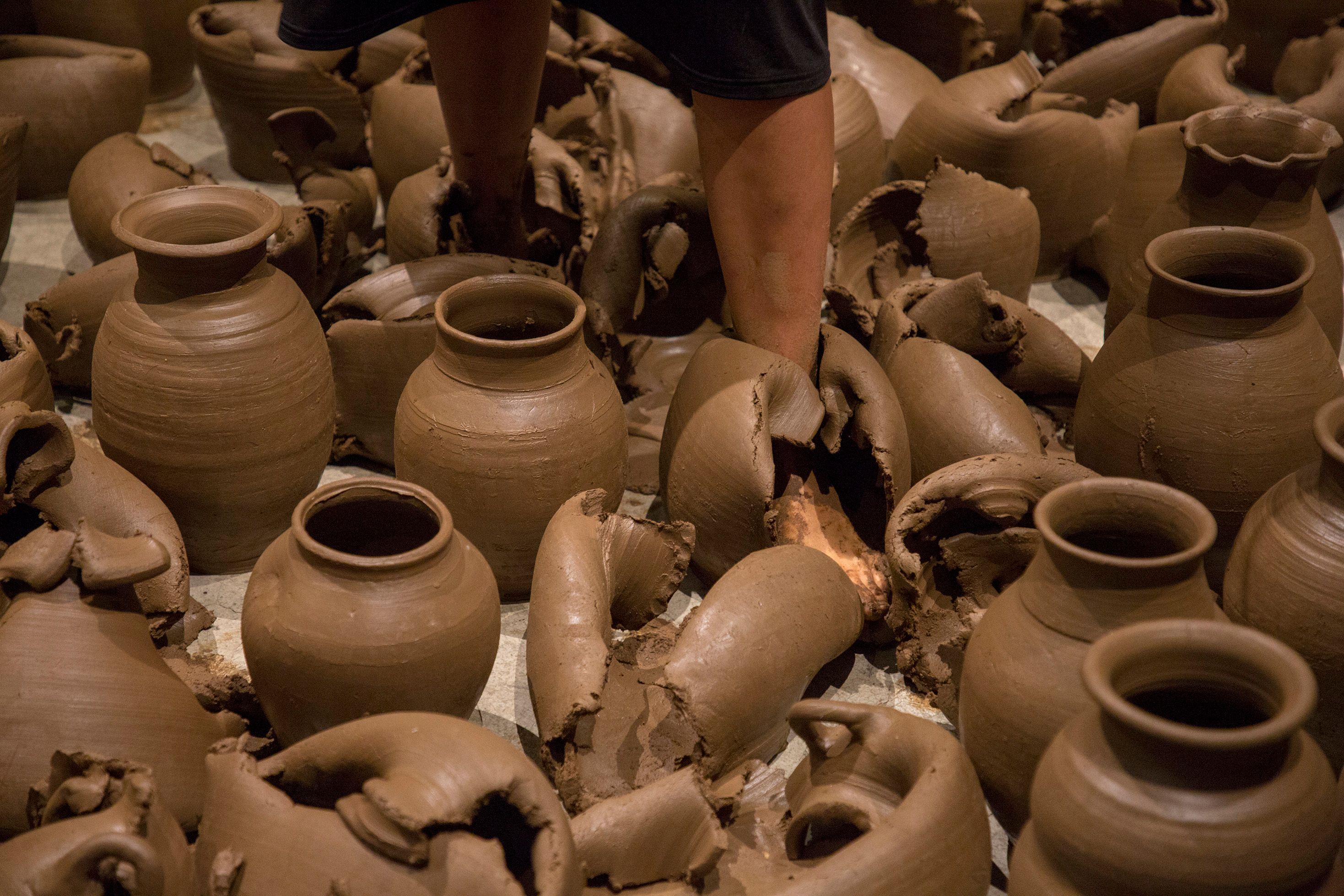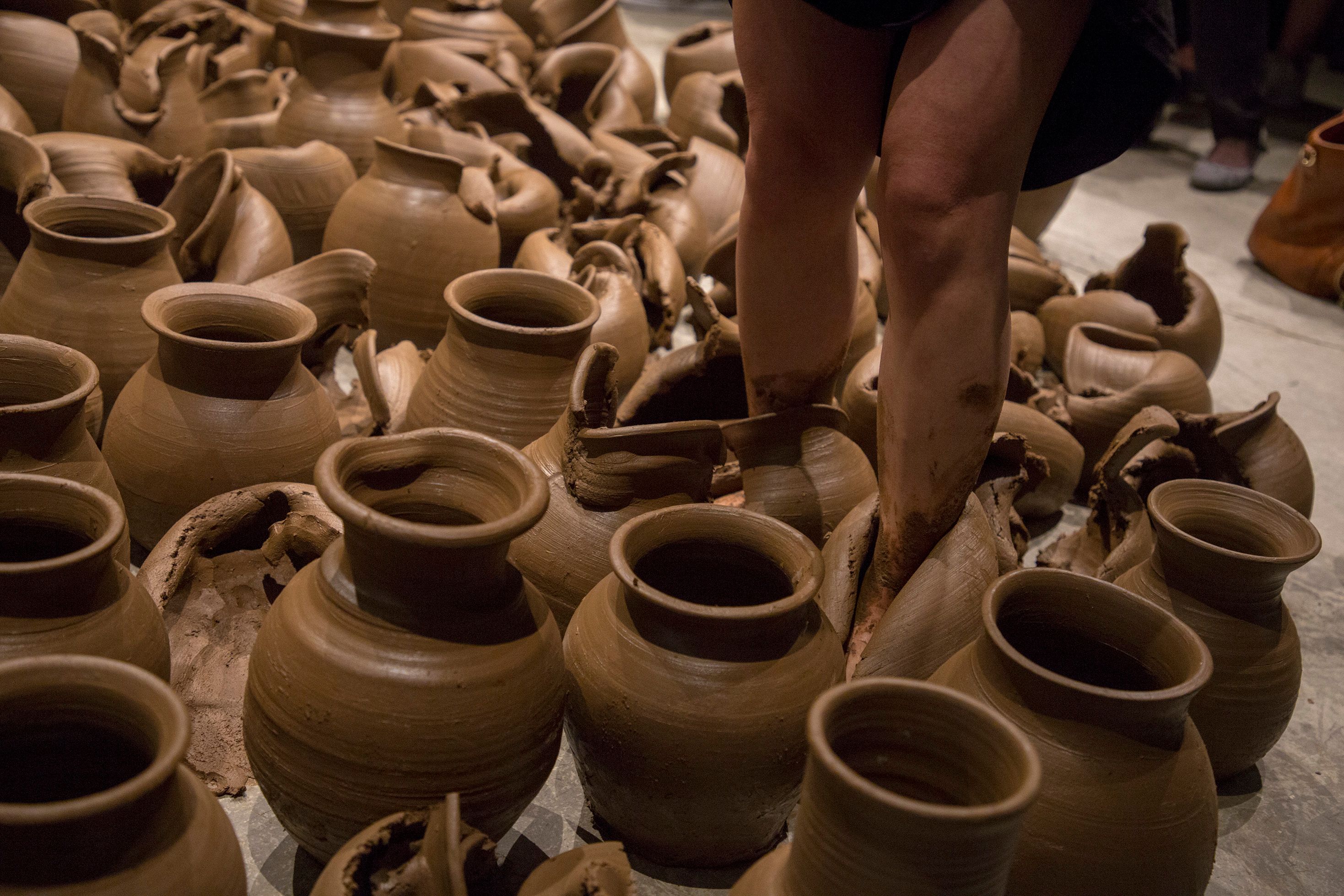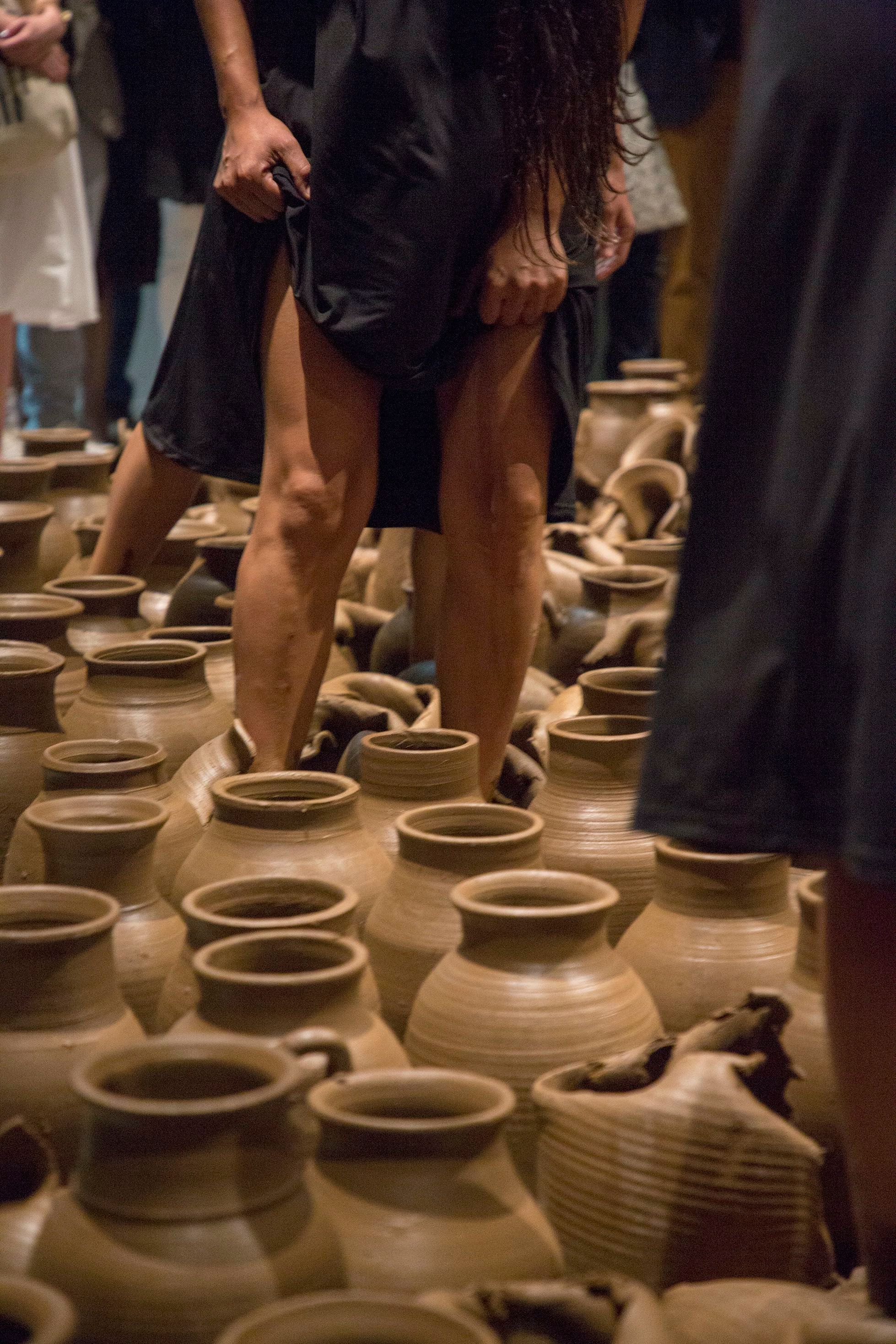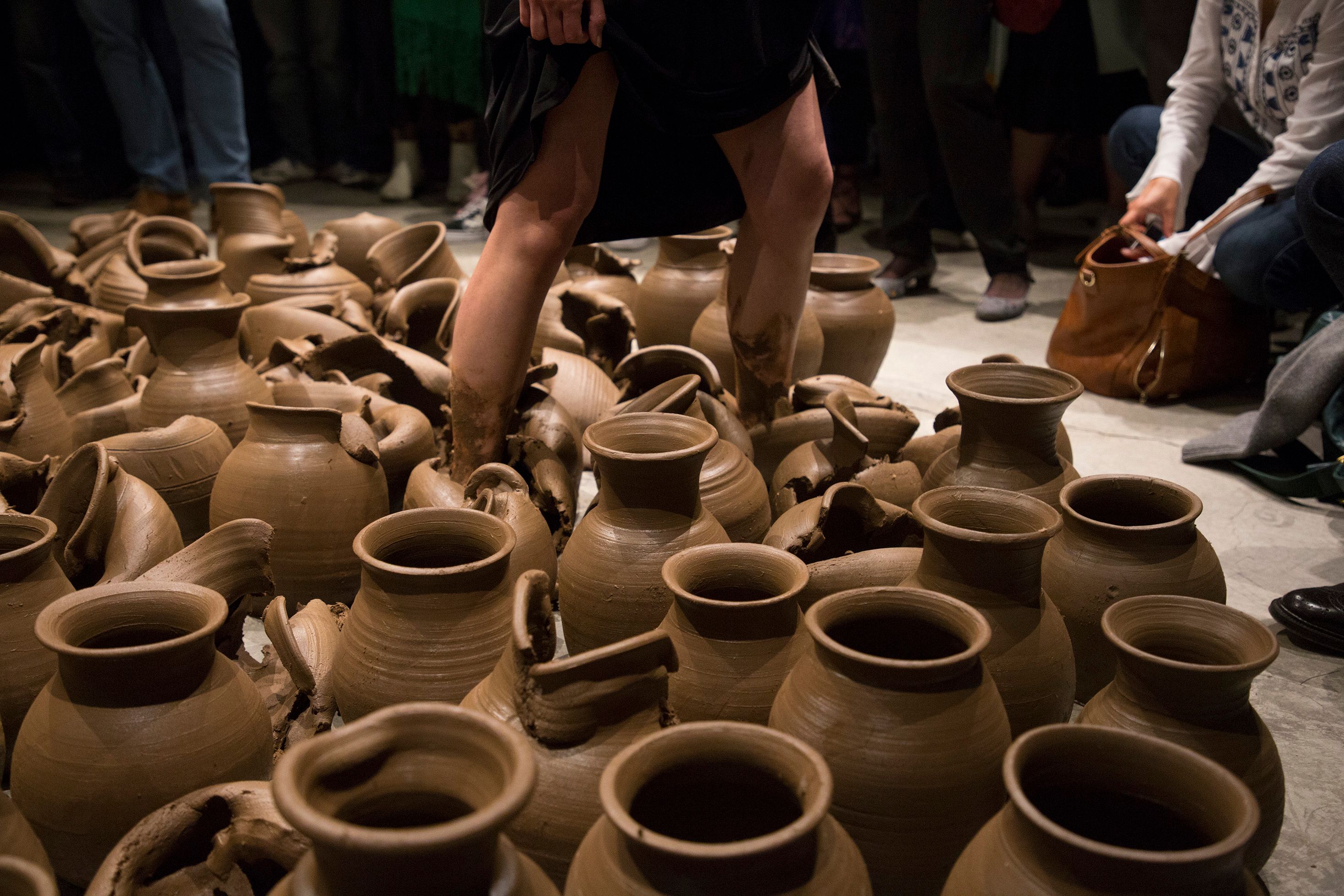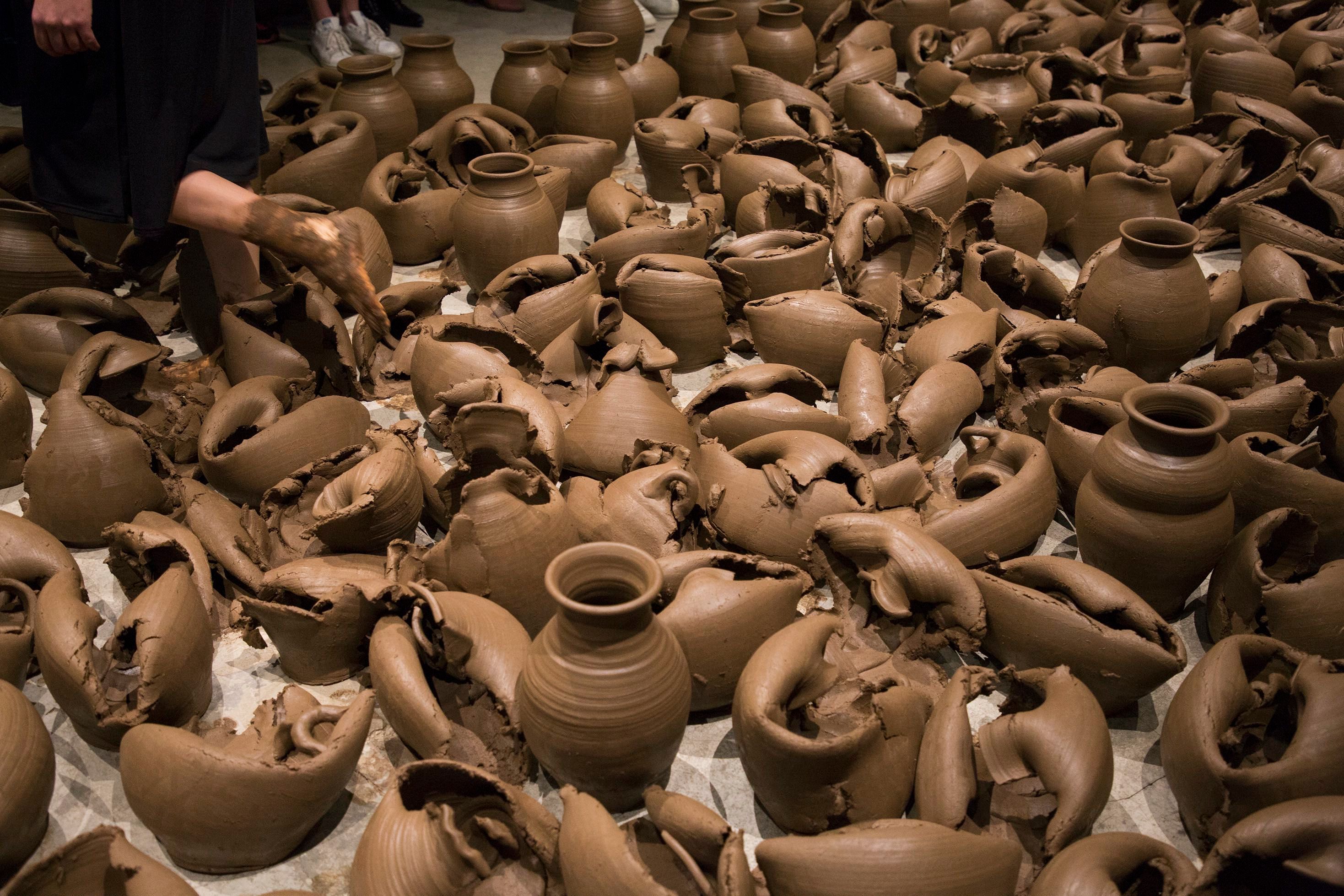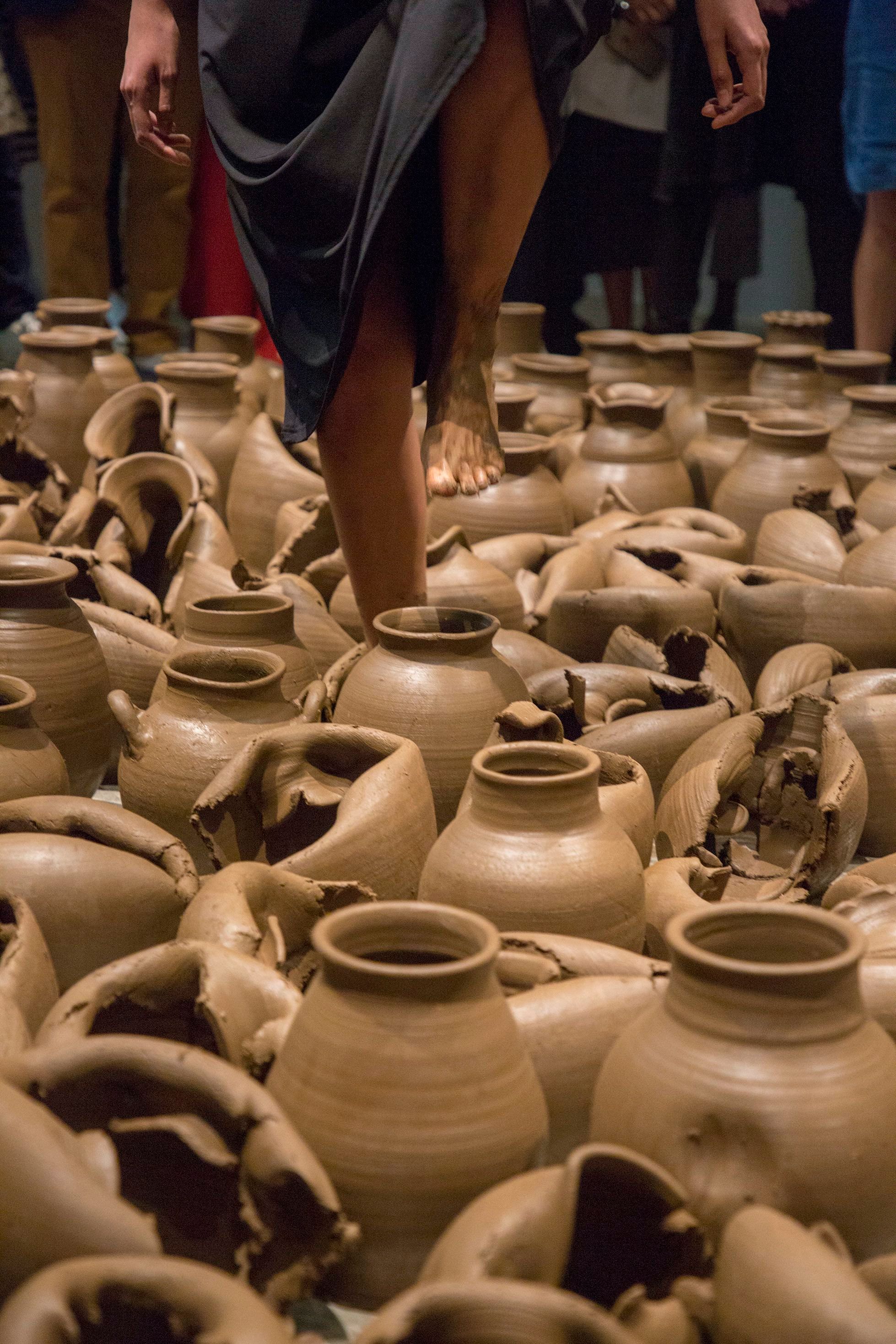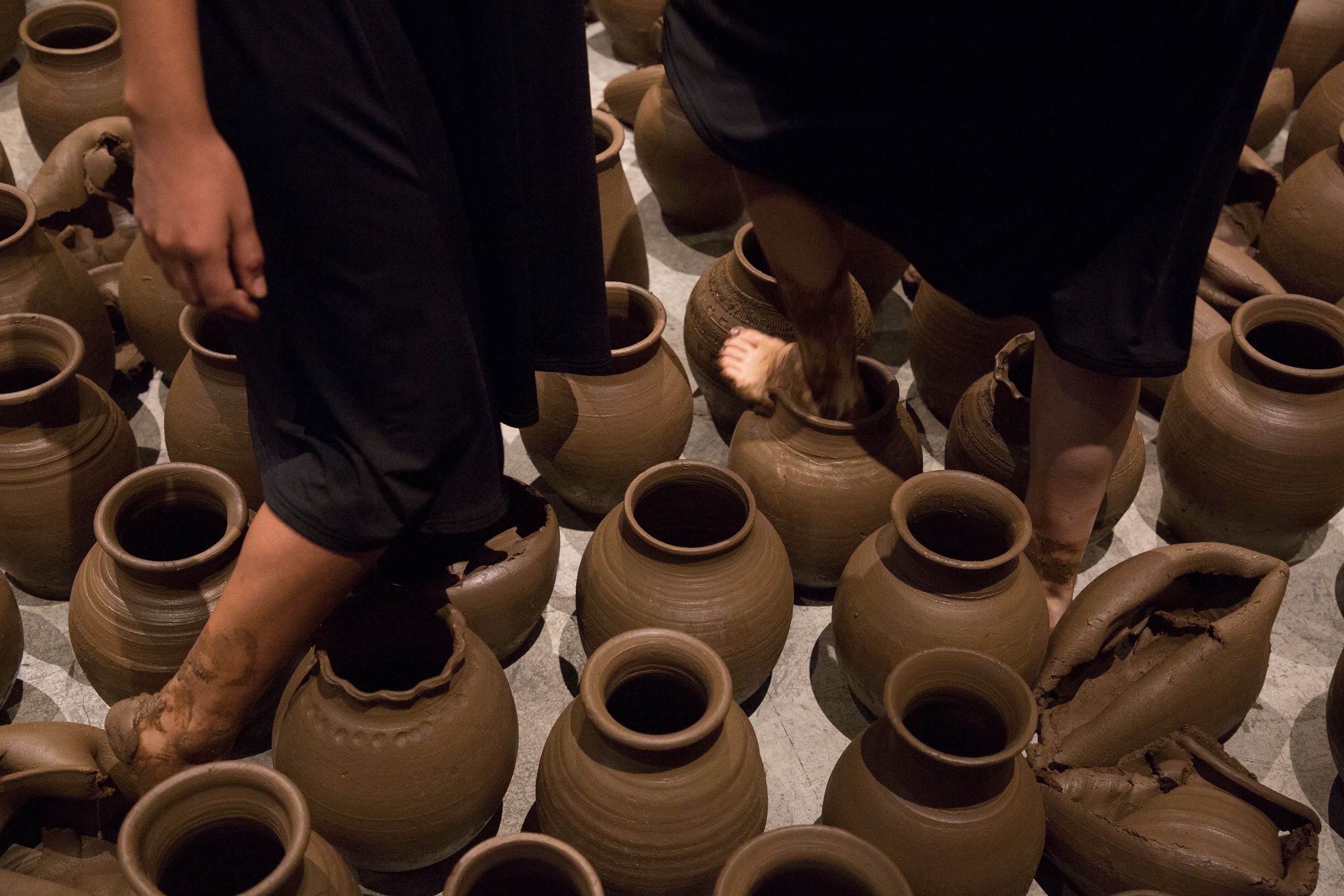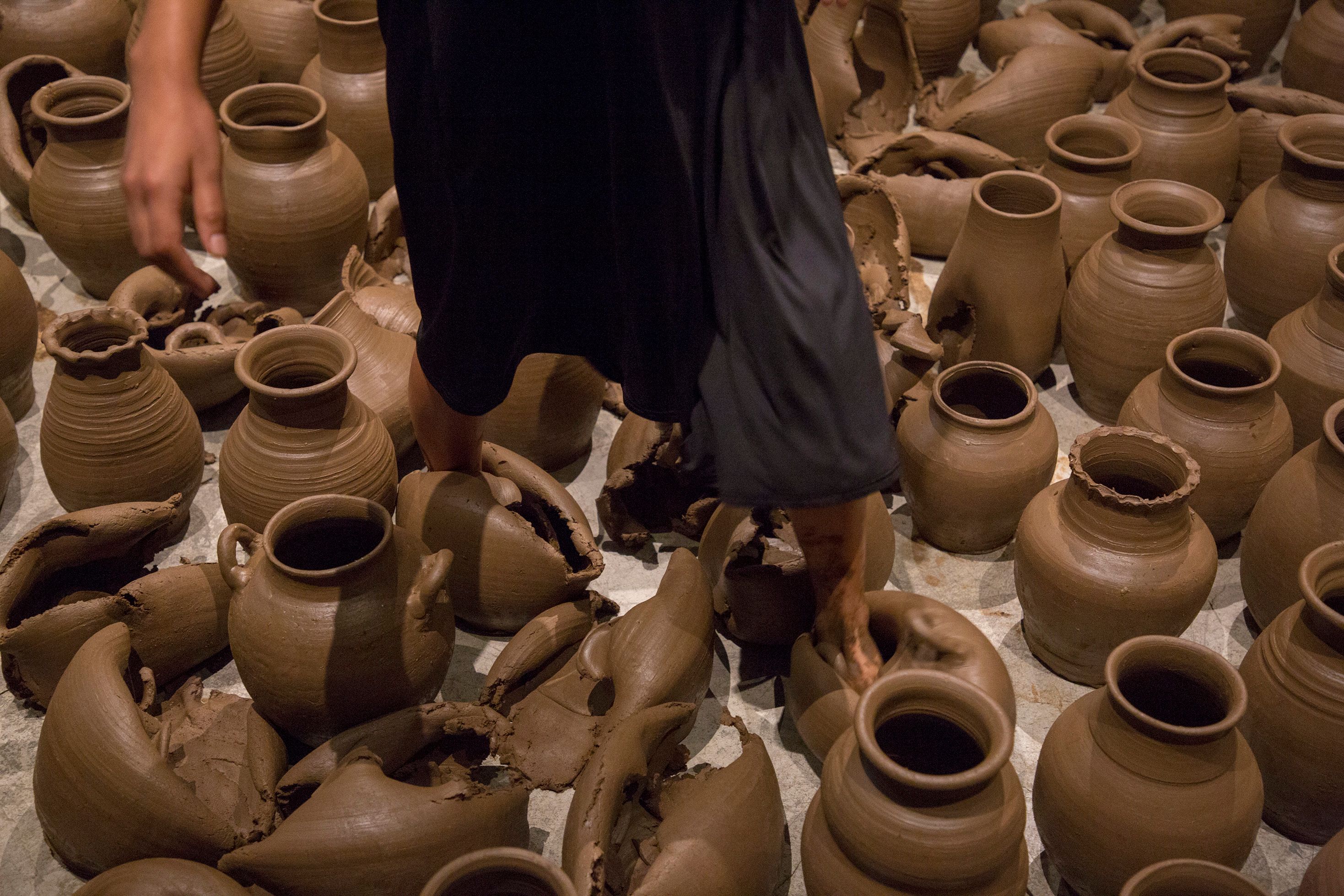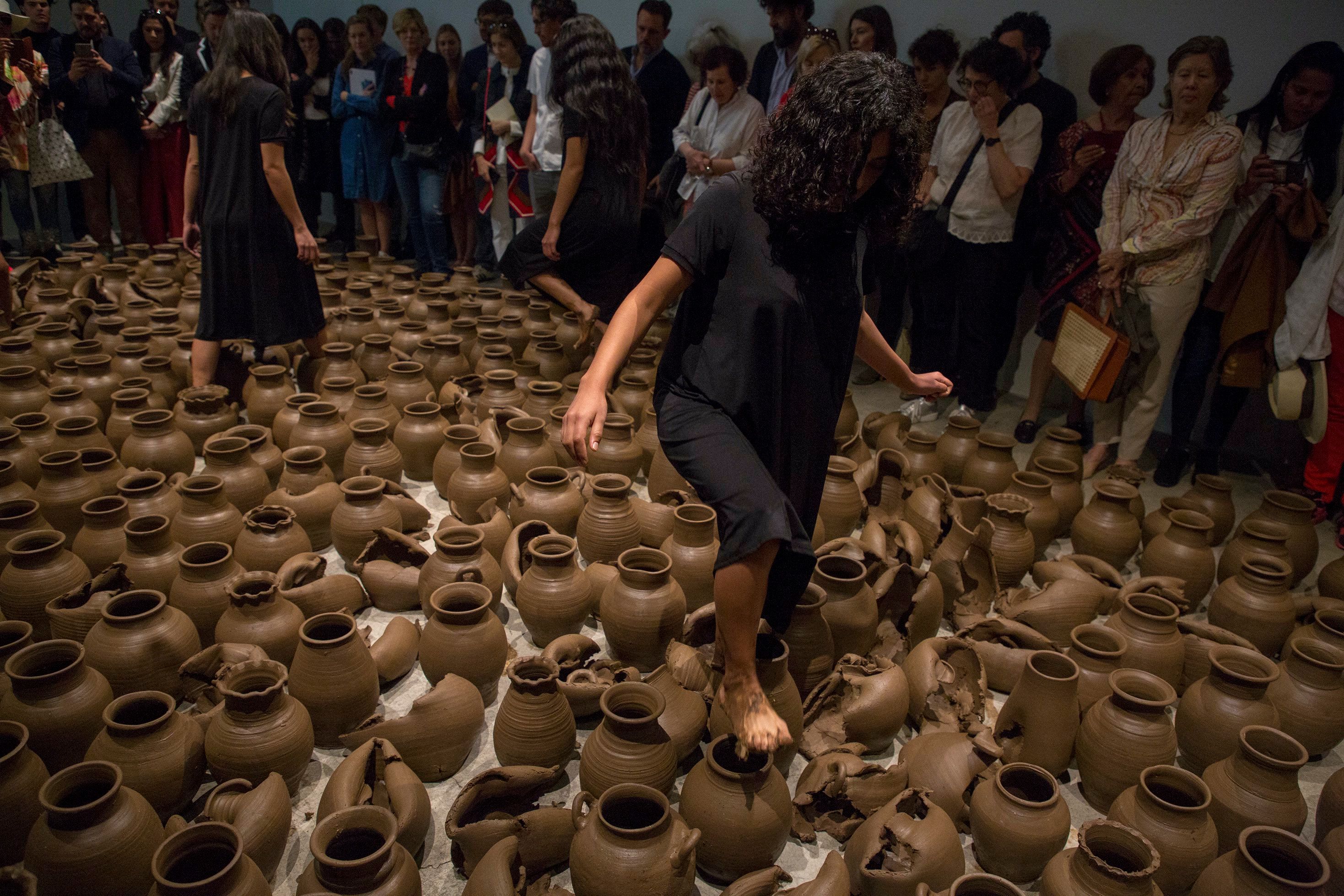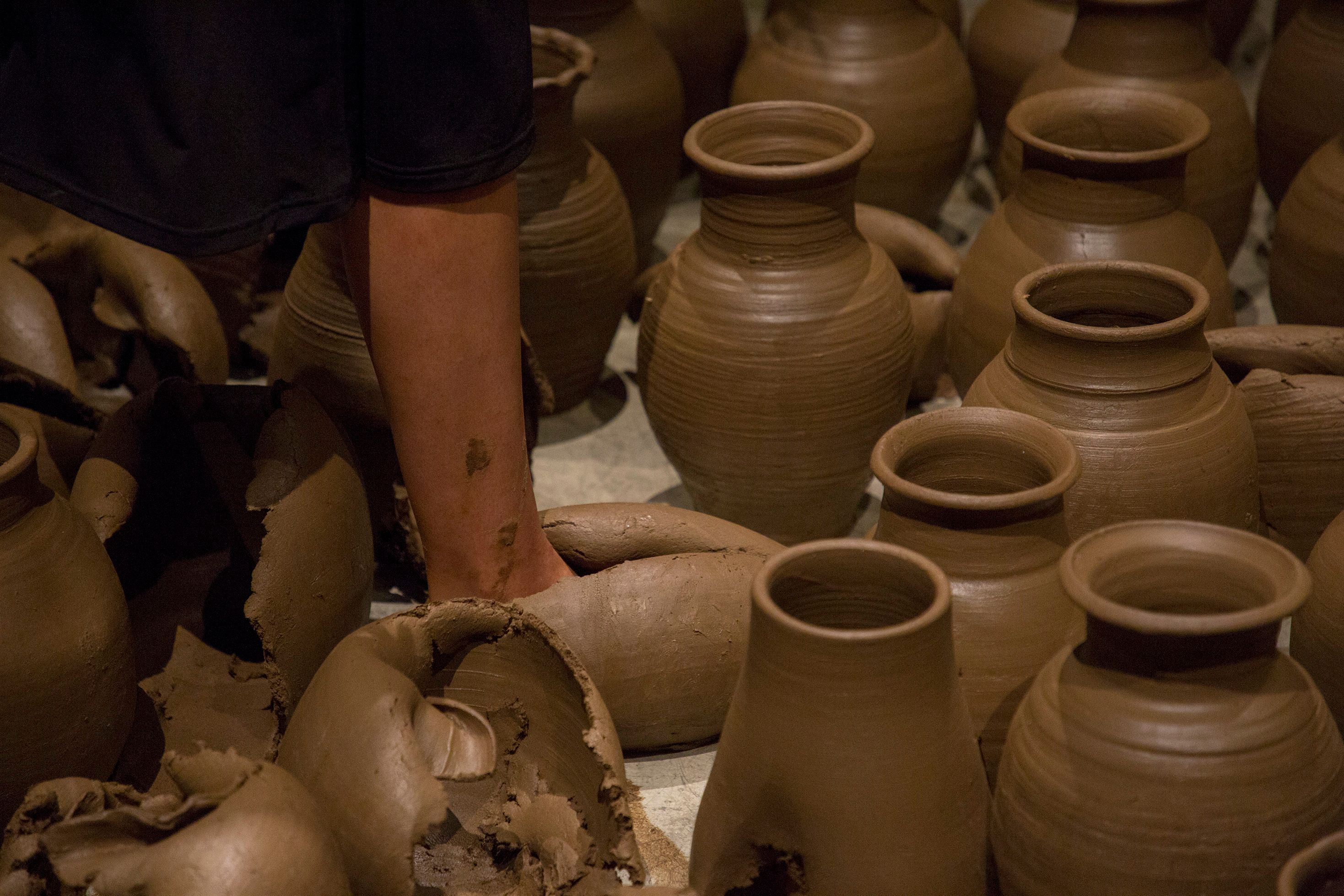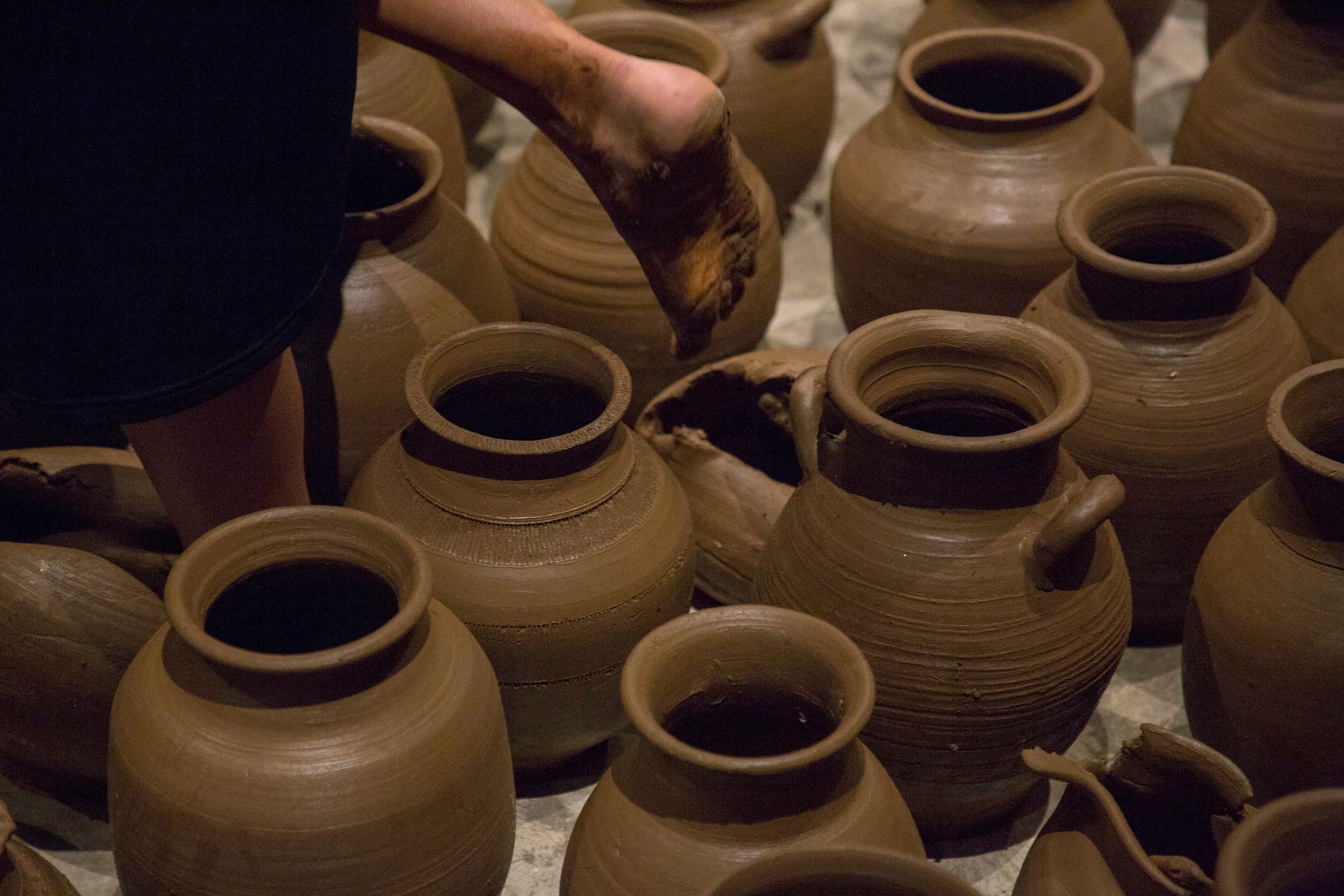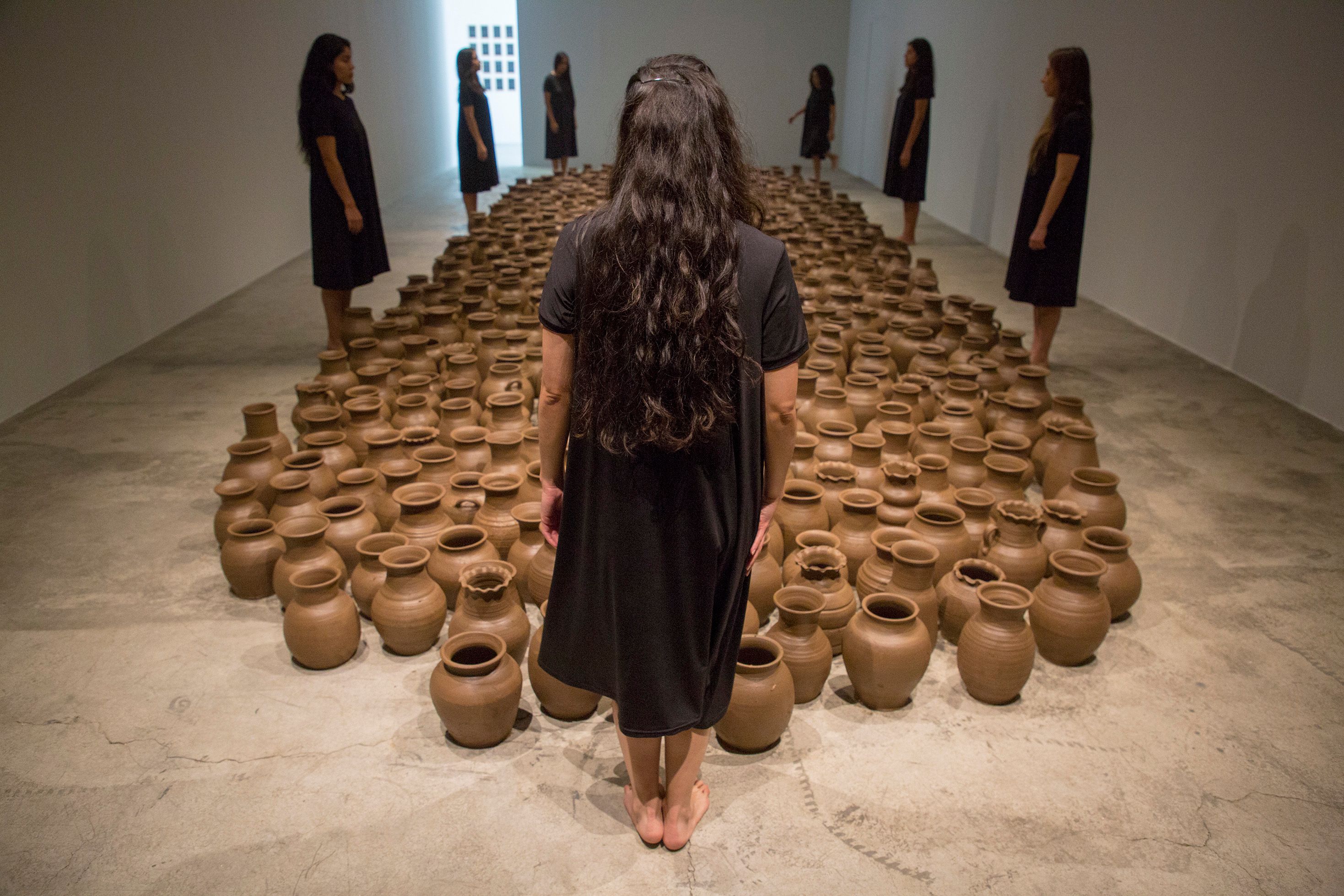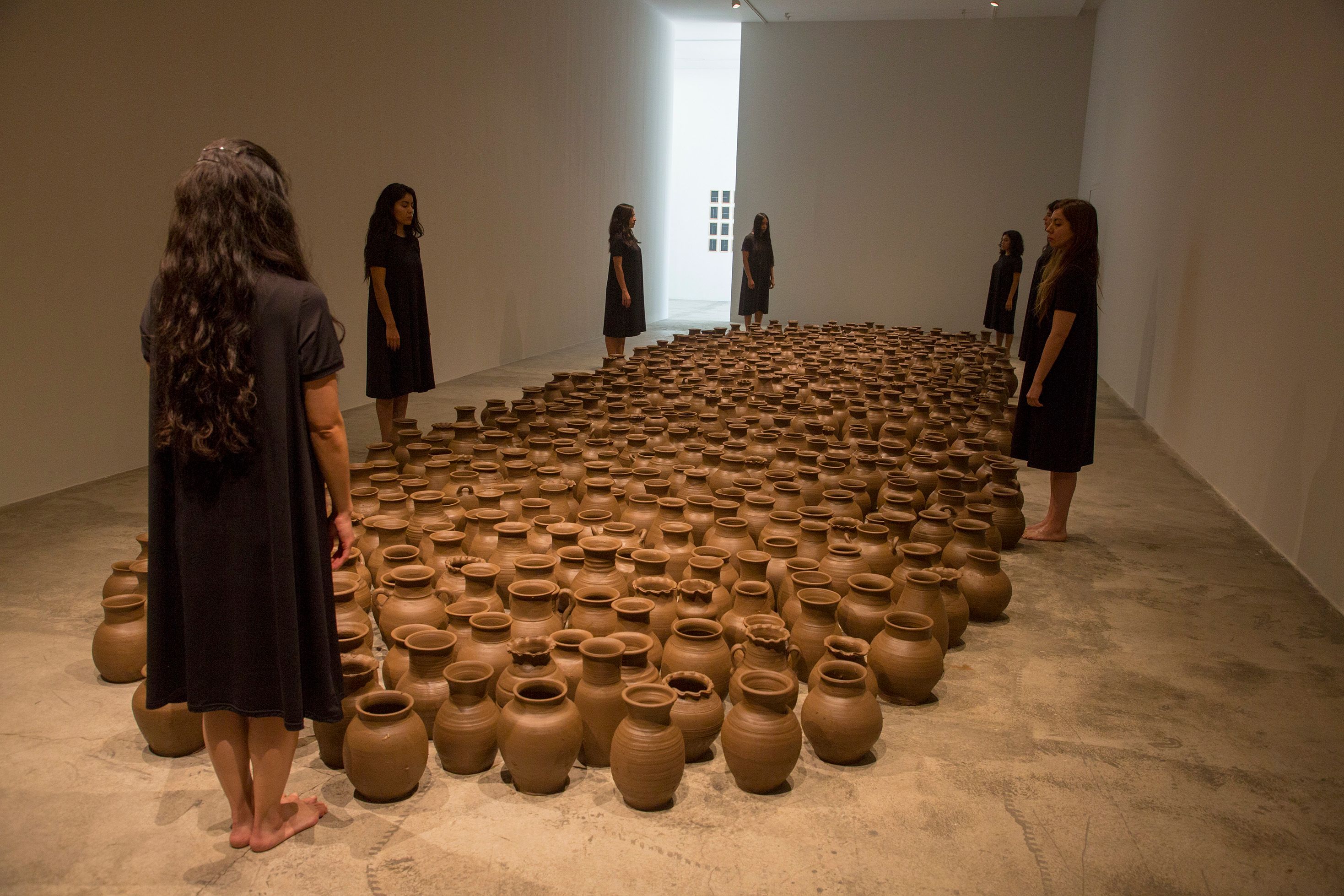In recent years the work of Héctor Zamora has been characterized by actions that involve the participation of people: situations designed to happen in specific contexts from museums and galleries to public spaces where body and matter generate ephemeral sculptural moments that, most of the time, become installations. His work reveals issues linked to `site´ with all the social, political and historical implications this brings. Performatic strategies coupled with the plasticity of his merely sculptural works achieve an accumulation of energy of diverse intensities that activate formal and conceptual discourses around the idea of art as an event. The action takes place during the inauguration and consists of a set of 800 crude clay pots placed on the floor of the gallery and around it, 7 women dressed in black will take position. Once the performance begins, the women will walk at different rates above the vessels deforming them step by step, squeezing out the air they contain; transforming with their own weight the terracotta landscape that fills the space almost completely.
Movimientos emisores de existencia arises from a fascination of the iconic figure of a woman carrying a vessel on her head to transport water or food, which then unfolds into multiple possibilities of transporting almost anything in an ergonomic perfection that results extremely efficient, elegant and sensual. For several years Zamora has been collecting endless images of people from different periods and regions of the world carrying something in their heads, as a way of insisting in the image and an inquiry about the burden and strength that this represents. Being a task historically assigned to women in different cultures, the female figure becomes the focus of this action in which Zamora disrupts the order of things to place the vessel not on the head, but at the feet of these women. By inverting the equation what happens next is the creation of a 'common space' that points to the notion of collectivity as a possibility, but not as something given.



